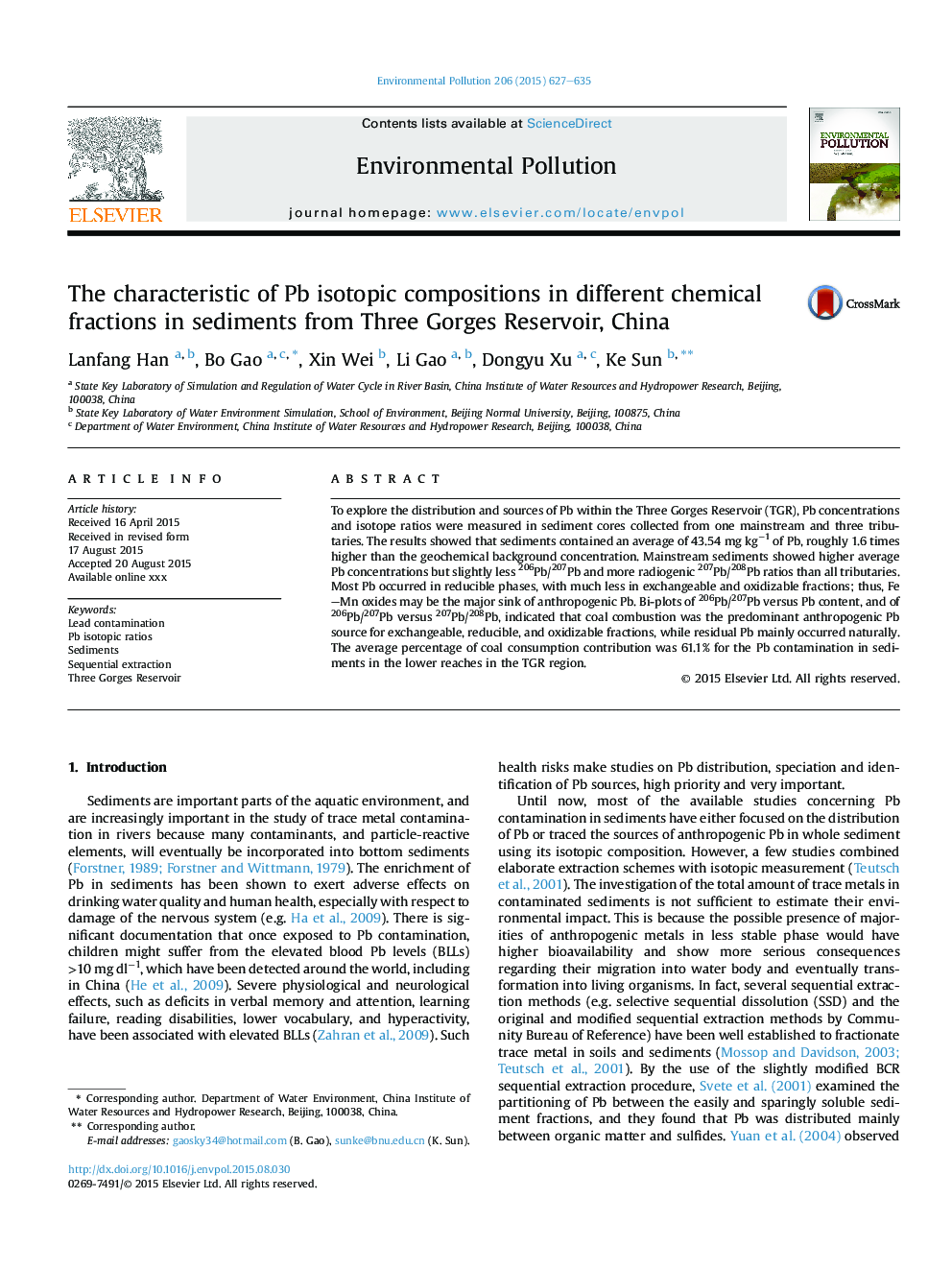| Article ID | Journal | Published Year | Pages | File Type |
|---|---|---|---|---|
| 6316877 | Environmental Pollution | 2015 | 9 Pages |
Abstract
To explore the distribution and sources of Pb within the Three Gorges Reservoir (TGR), Pb concentrations and isotope ratios were measured in sediment cores collected from one mainstream and three tributaries. The results showed that sediments contained an average of 43.54 mg kgâ1 of Pb, roughly 1.6 times higher than the geochemical background concentration. Mainstream sediments showed higher average Pb concentrations but slightly less 206Pb/207Pb and more radiogenic 207Pb/208Pb ratios than all tributaries. Most Pb occurred in reducible phases, with much less in exchangeable and oxidizable fractions; thus, Fe-Mn oxides may be the major sink of anthropogenic Pb. Bi-plots of 206Pb/207Pb versus Pb content, and of 206Pb/207Pb versus 207Pb/208Pb, indicated that coal combustion was the predominant anthropogenic Pb source for exchangeable, reducible, and oxidizable fractions, while residual Pb mainly occurred naturally. The average percentage of coal consumption contribution was 61.1% for the Pb contamination in sediments in the lower reaches in the TGR region.
Related Topics
Life Sciences
Environmental Science
Environmental Chemistry
Authors
Lanfang Han, Bo Gao, Xin Wei, Li Gao, Dongyu Xu, Ke Sun,
